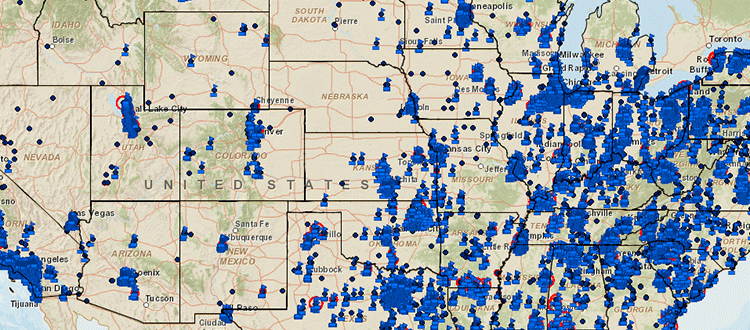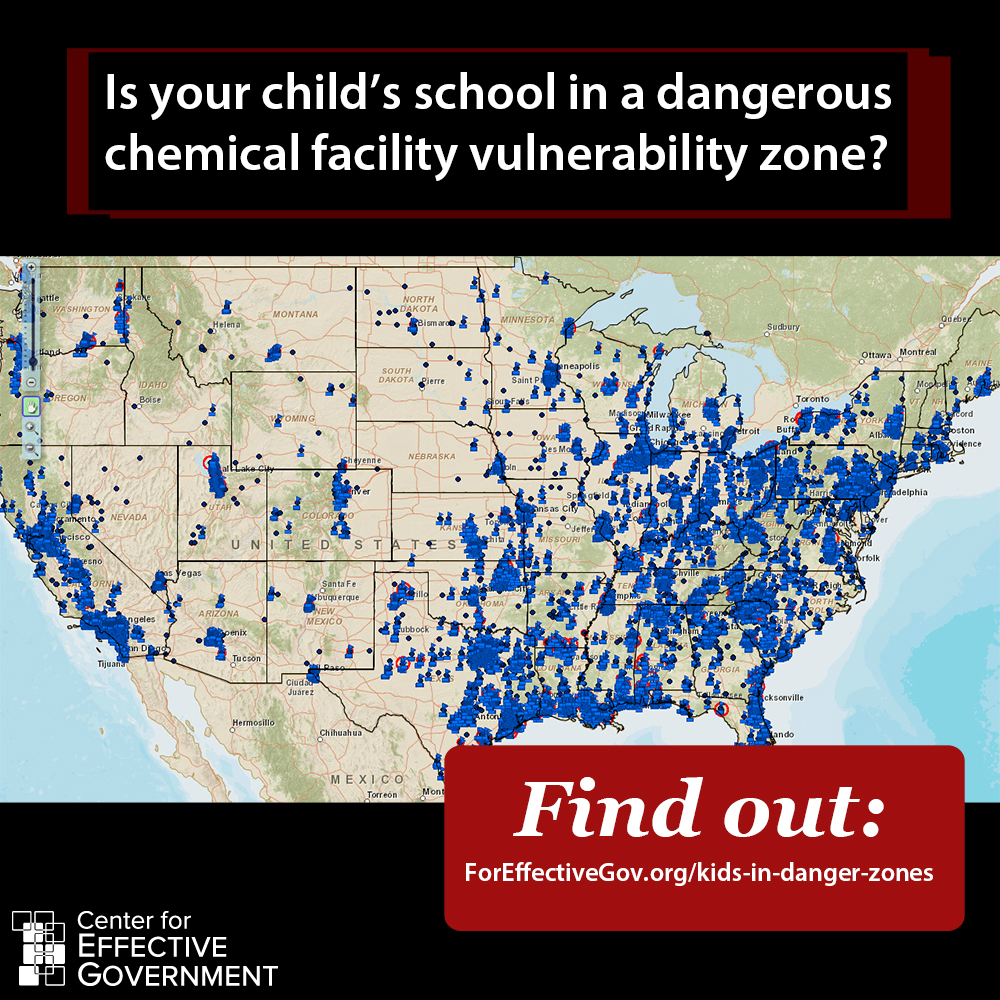Is Your Community At Risk? 1 in 3 Schoolkids Are in a Chemical Danger Zone
 |
|
Amanda Frank Center for Effective |
We insist our kids wear bike helmets and seatbelts, and look both ways before crossing the street. We demand playground equipment that’s safe and schoolrooms without lead paint. So did you ever imagine when you send your child to school that he or she could be in the danger zone of a toxic chemical facility?
The Center for Effective Government released an interactive map tool showing schools located within the danger zones of the most high-risk chemical facilities. These facilities store huge amounts of hazardous chemicals, including toxins like chlorine gas (a chemical weapon during WWI). An accident or explosion would harm neighborhoods up to several miles from the facilities’ fence – neighborhoods that include the schools our children attend.
The bad news is that at least one in three U.S. schoolchildren attends schools in these danger zones. That equals 19.6 million children in nearly 40,000 schools. One in three is an alarming and unacceptable number.
The good news is that it doesn’t have to be this way. Facilities can switch to safer chemicals and technologies that reduce the risks to surrounding communities. They can also store smaller quantities of toxins. Many facilities have already made this switch.
But until regulations require facilities to use safer chemicals, most will continue to put our children in harm’s way. Fortunately, there are actions you can take today to reduce the size of danger zones and safeguard our children:
- Sign our action alert urging the Environmental Protection Agency (EPA) to require companies to use safer chemicals. Act now before the public comment period closes on Oct. 29.
- Use the map to locate your child’s school and any nearby facilities that may be putting children at risk. The map also includes contact information for these facilities; you can contact them yourself or start a letter-writing campaign urging them to switch to safer chemicals.
- Share our curriculum with teachers which helps students take action on this issue.
- Share the map, report, and state fact sheets with your friends and neighbors. Encourage them to sign the action alert, as well.
Together we can improve our nation’s chemical regulations and protect the safety of our children. For more resources, visit the project’s landing page.




